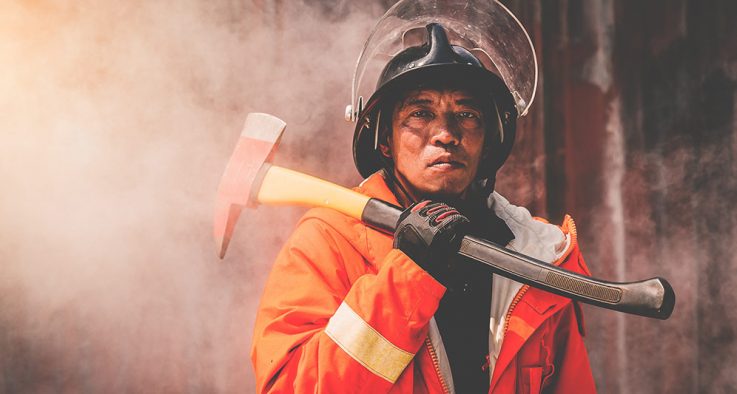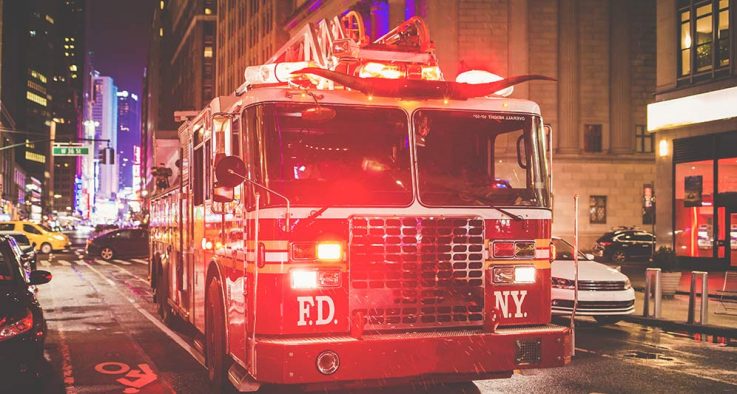Article highlights
Although the ISO rating is meant to score a fire department’s ability to protect the community, it is not a perfect measure of a fire department, as many factors come into play. While it is an honor to receive a high rating, in reality, there isn’t anything concrete on the line.
However, firefighters are a competitive bunch. Once you know a nearby fire department garnered a good score, you’ll make sure your own ISO score is better. Afterall, bragging rights are worth something.
But what exactly are ISO ratings for fire departments?
ISO stands for Insurance Services Office (ISO), which is an independent, for-profit organization. The ISO scores fire departments on how they are doing against its organization’s standards to determine property insurance costs.
After analyzing the data it collects, the ISO assigns a Public Protection Classification (PPC) on a scale from 1 to 10. The higher the ISO fire protection class (with Class 1 being the best), the “better” the department – at least in the eyes of the ISO.

How Is the ISO Score Determined?
To determine ISO rating for fire departments, the organization conducts a field survey and scores your department across four key areas using the Fire Suppression Rating Schedule (FSRS).
These areas include Emergency Communication Systems (10 points); Fire Departments, covering personnel, capabilities, training, equipment, etc. (50 points); Water Supply (40 points); and Community Risk Reduction (extra credit of up to 5.5 points).
It uses a 100-point scale (with the potential of 105.5 with the Community Risk Reduction extra credit), and the more points you score, the better your ISO fire rating.
Rest assured, not all of this responsibility falls on the fire department even though, ultimately, it’s your station that gets assigned the score. But, understand that this is a community ranking. Therefore, the community might need to step up and get involved in many aspects of this PPC process.
How ISO Ratings for Fire Departments Impact Your Community
A good ISO fire rating brings value to your community, so it makes sense to try to improve your score.
Lower insurance premiums
While it’s a common perception that homeowner’s insurance premiums are directly tied to the ISO fire rating, this isn’t necessarily true. Many insurers do provide discounts for lower PPC scores, but their rating structure is complex and constantly changing. And in some states, the score is not even a factor at all.
So, it’s good for you to understand how the ISO fire rating works in your community before assuming this is completely true in your circumstance.
As the parent company of ISO, Verisk estimates insurers representing 75% of the residential and commercial market access PPC information when determining their prices. In many states, according to Verisk, the better the ISO score the lower the homeowner insurance premiums. But exactly how much weight is placed on the score is unclear.
Badge of honor
Ultimately, a lower score reflects well on a fire department. Like accreditation, a good ISO fire rating demonstrates a commitment to excellence as verified by a third-party reviewal.
Plus, it really is an honor to be able to claim an ISO Fire Protection Class 1 rating. You all work hard as a team, so to come out on top with a high ISO score is something you want to shout from the top of your fire truck.
This coveted ISO rating clearly demonstrates that you are doing what you need to be doing to help protect your community. Why keep it a secret?
Review against best practices
Unlike fire department accreditation, which is handled through the nonprofit Commission on Fire Accreditation International, the ISO rating is assigned by a for-profit company.
Nevertheless, the results are tangible and valuable, regardless of the source. Why? The ISO is still compiling industry best practices and giving your department a review of how you are doing compared to those independent standards.
How to Improve Your Fire Department’s ISO Score
Even though this is a community score, your department can take the reins in some areas to help improve your ISO fire rating.
Community water supply
While this isn’t totally on the fire department, you will need to advocate to your city or county’s leaders in order to make community water supply a priority.
Water supply is the single biggest contributor to lower scores. So, if you want to improve your ISO score and you have an inadequate water supply, your fire department needs to get the issue onto the radar of city officials.
Having said that, you will need a better reason for that infrastructure project other than wanting to improve the ISO score. You can help community leaders put the request into context if you can tie your reason to a specific problem in the community.
For example, if the problem is X, and an adequate water supply will help you reduce X by a certain amount each year or month or week, that is an easier sell. Do some research and arm yourself with statistics to show how the community would benefit from improving the water supply.

Training
One area that can show immediate results and boost your score? Training your firefighters. The PPC checklist wants 20 hours per firefighter per month, so adding in some training hours can improve your score.
If you dismiss training because it costs too much or eats up valuable work time, think outside the box. You can supplement training hours by simply adding in online training courses to your existing in-service training. Online courses prove both cost-effective and time-efficient, as they cost less than in-service training and take less time to complete.
With a training management solution, like PowerDMS, you can create, deliver, test, and track online training to simplify your efforts and keep your costs down without pulling firefighters away from other duties.
Better communications
Another score-boosting area to tackle? Cleaning up your internal communications processes and procedures. Some of this is equipment-based, such as getting more radios and other equipment in the right hands.
But it also focuses on improving internal communications. Getting everyone on the same page and aware of the current situations, risks, threats, and tactics will keep your firefighters safe. And with the safety at the helm of what your department stands for, this helps promote a better ISO fire rating.
SOPs
Although not directly tied to the ISO score, your standard operating procedures (SOPs) pave the way for earning a higher ISO fire protection class. Be strategic by tying your SOPs to the activities that improve scores.
This can also serve as a very cost-effective way to improve your ISO fire rating because you aim to more efficiently use the resources at hand. So, by boosting your operational efficiency through strategic SOPs, this will ultimately lead to a better score.
Personnel
Can your current staff handle the workload or are they maxed out? You can improve your ISO fire rating (and reduce firefighter burnout) by ensuring your department maintains adequate staffing levels. While it can prove difficult to recruit and train new firefighters, especially among millennials, it adequately staffing your department factors into a good ISO score.
Again, look at alternatives beyond traditional staffing options. For example, consider recruiting volunteer firefighters. This isn’t an option for every department (and might be more hassle than it’s worth if you don’t already tap into volunteers), but it could be a viable solution for some.

Tracking
Like SOPs, tracking your efforts isn’t directly tied to your ISO score. However, it is tied to being able to prove that score out.
Keeping track of and reporting on everything your department does will help you prove out your excellence, as arming yourself with solid data always makes for a stronger case.
The more you can track – from training hours to response times to equipment maintenance – the better you will position your department as worthy of an ISO Fire Protection Class 1 rating. PowerDMS makes tracking easy, showing you who has completed training and making follow-up easy. And when you do snag that high ISO score, take pride in earning that honor. Go ahead, take a bow. In fact, you might even want to brag about it.


